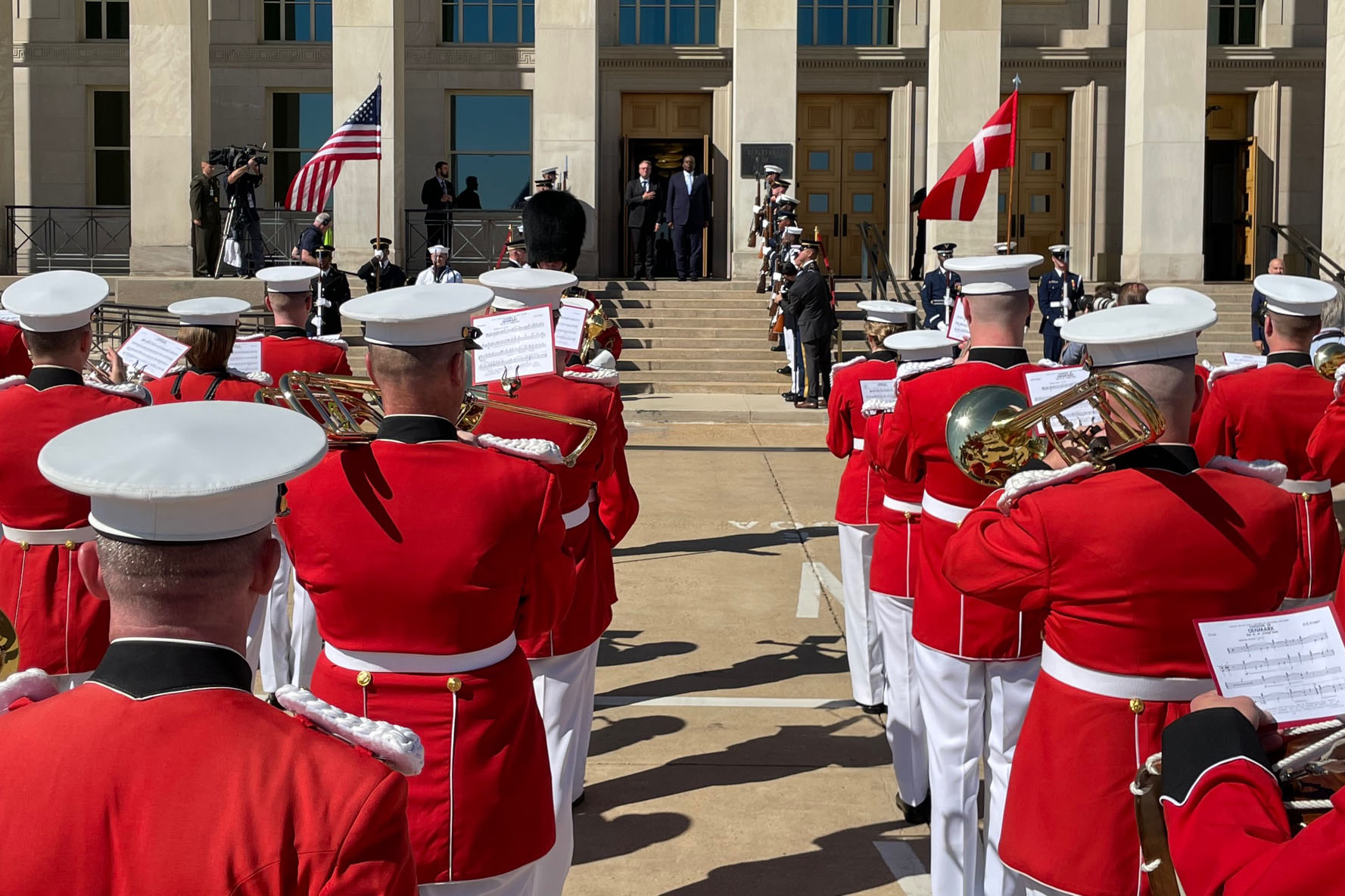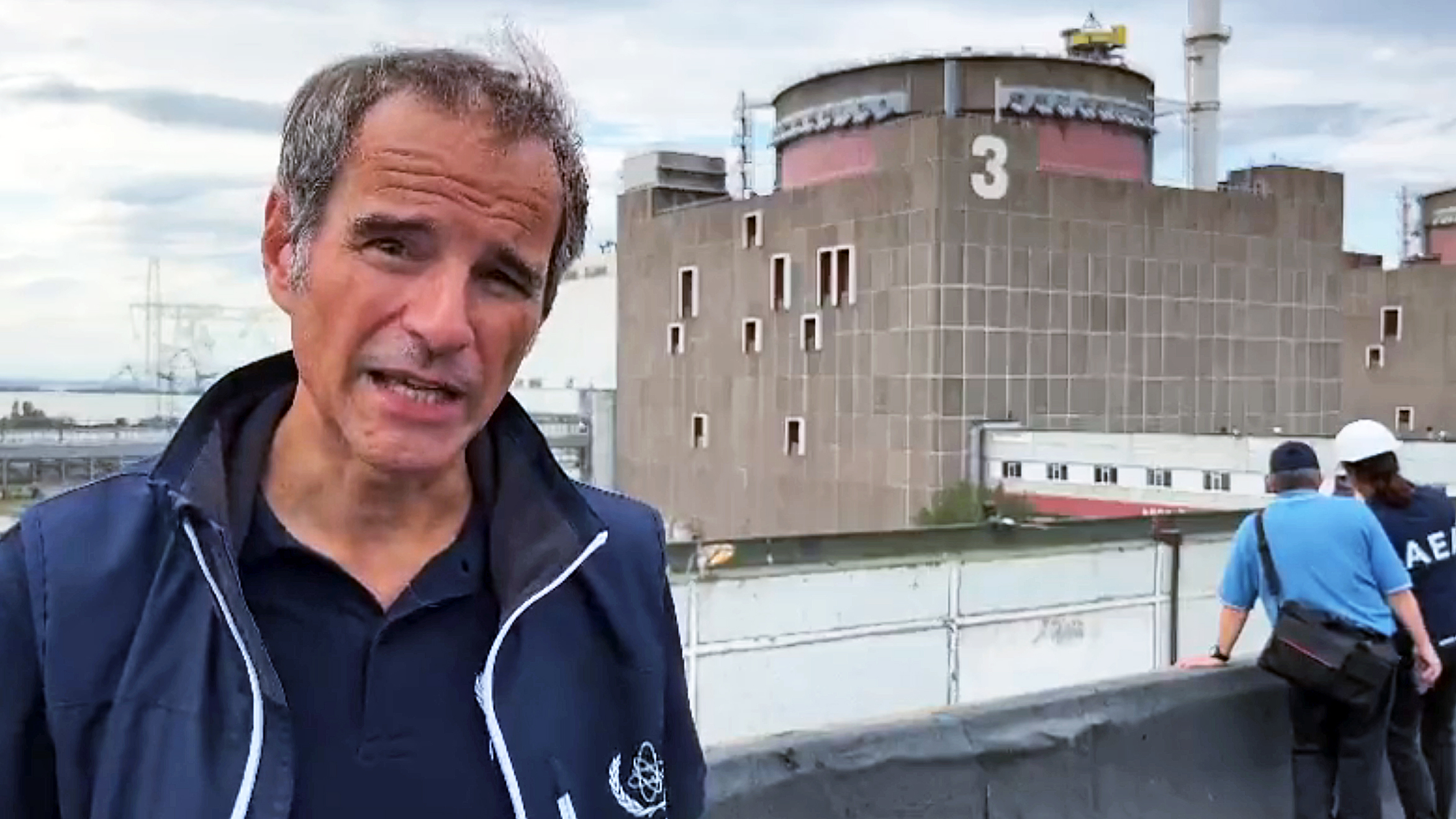A team from the United Nations’ International Atomic Energy Agency (IAEA) has visited the Russian-occupied Zaporizhzhia nuclear power plant and intends to establish a permanent presence to keep tabs on the at-risk facility.
IAEA Director General Rafael Mariano Grossi is leading the team, which deployed to the plant to “conduct indispensable nuclear safety and security and safeguards activities,” according to an agency statement.
“There has been increased military activity, including this morning until very recently, a few minutes ago,” Grossi told reporters on Thursday morning before heading to the plant. “I have been briefed by the Ukrainian regional military commander about that and the inherent risks.”

Grossi likely was referring to shelling near the plant that occurred early on Sept. 1. Ukraine’s state nuclear company, Energoatom, reported that artillery fire required the plant’s fifth power unit to be shut down but that a sixth was still running, before the IAEA team’s arrival, according to the Kyiv Independent.
The risk to the team is highest as it crosses the so-called “gray zone” between the Ukrainian and Russian lines that the members must traverse to reach the Russian-occupied power plant, Grossi said, wearing a blue flak jacket with a United Nations patch on the chest.
“Weighing the pros and cons and having come so far, we are not stopping,” he added. “We have the minimum conditions to move, accepting that the risks are very, very high. … We have a very important mission to accomplish. As you know, we are going to start immediately an assessment of the security and safety situation at the plant as it is right now.”
Grossi said his team planned to speak with plant staff and figure out how to establish a continuous IAEA presence there, which he said is “indispensable to stabilize the situation and get regular, reliable, impartial, neutral updates on what the situation is there.”
Ukrainian and Russian forces are pointing fingers at each other for putting the plant at risk of a nuclear catastrophe. Buildings near the plant’s reactors have been hit by artillery fire while Russia, since March, has housed troops, artillery, and armored vehicles in and around the sensitive installation. A video of the inspectors walking through some of the plant’s cavernous buildings shows that Russian military vehicles are still parked inside these sensitive areas. Proof was this was the case first surfaced weeks ago via a leaked video which you can read more about here. Fire has also broken out at and around the plant more than once.
Earlier this month, external power was cut to the plant for the first time in its history. Backup diesel generators kept the plant’s cooling systems running, but if those had failed the reactors were at risk of overheating and causing a runaway nuclear disaster.
The IAEA mission was able to tour parts of the plant during the initial tour and deemed it feasible for at least some international observers to stay on and report on conditions at the facility, Grossi said in a video posted to his personal Twitter account later on Sept 1.
“We are finishing our long-awaited visit to the Zaporizhzhia power plant,” Grossi said in the below video. “I have just completed a first tour of the key areas that we wanted to see in this first approach to the whole facility. Of course, there is a lot more to do. My team is staying on.”
“More importantly, we are establishing a continued presence of the IAEA here,” he added.
Ukraine’s state nuclear company, Energoatom, says five IAEA personnel will remain at the plant at least for the next two days.
Maria Zakharova, head spokeswoman for the Russian Ministry of Foreign Affairs recently said that “radiation doesn’t need a visa to cross borders” and that if something does happen at the plant, “it will not be about visas, passports or borders.” The statement was in regard to the EU shutting down travel to Russians in response to the invasion and the potential for a crisis at the plant, which could be taken as a tacit threat by some.
With the problem nuke plant at least under the watchful eyes of neutral observers, for the time being, the war continues to rage elsewhere. Before diving into the details, take a moment to catch up on our previous rolling coverage here.
The Latest
Fresh off a meeting in Copenhagen where 26 nations and the European Union pledged an additional $1.5 billion to support Ukraine, Denmark’s Defense Minister Morten Bodskove flew to Washington, D.C., to meet with his U.S. counterpart.
A day before his Sept. 1 meeting with Defense Secretary Lloyd Austin, Bodskove stopped by the Atlantic Council to offer his thoughts on the war in Ukraine.
“I think we are looking into a long war, a longer war,” Bodskove said on Aug. 31. “I think we must look at Putin and Russia as what it is, a threat to peace and stability in Europe. What he has done in 2014, what he is doing now, is a complete break with all the rules that we have tried to establish and we must stand even stronger together, both within NATO, within the European Union, and other formations. He must not succeed.”

Bodskove said the war’s brutal early days shocked Western military officials, who made “spontaneous” decisions to flood Ukraine with weaponry that was already in NATO arsenals.
“We all looked to our stocks and grabbed what we could get to support the Ukrainians,” he said.
What he calls the second phase of arming Ukraine was then hammered out in April when pro-Ukraine allies and partner nations met at Rammstein Air Base in Germany. There it was agreed the second phase of arming Ukraine would be specifically tailored to Kyiv’s battlefield requirements and would be more coordinated, Bodskove said. A third phase will involve long-term investment in new weapons destined for Ukraine, training initiatives for Ukrainian troops and demining efforts, he said.
Bodskove vowed to thank Austin for U.S. leadership in providing weapons during a meeting planned for Thursday at the Pentagon.
“We couldn’t have done what we have done without the Americans,” he said. “The infrastructure is enormous. The political will behind it is enormous. Again, we are at a phase where, the United States, there is absolutely no question about their support for Europe.”
At the meeting, Austin said Denmark is in step with the United States in providing arms — including the first Harpoon anti-ship missiles — supplies, and training to Ukraine, according to a Defense Department statement.
“Today, we proudly stand with you in the face of Russian aggression that threatens Europe’s freedom and security,” Austin said. “Russia’s unprovoked invasion of Ukraine continues to be reckless and cruel. So, Mr. Minister, I want to thank you for everything that you’re doing to support the Ukrainian people.”

Ukrainian forces continued offensive operations in the south around Kherson, “supported by intensive long-range strikes against Russian command and logistics locations across the occupied zone,” according to the U.K. MoD’s Sept. 1 intelligence assessment of the war.
The U.K. Ministry of Defense also highlighted Ukraine’s release of a video of its MiG-29s firing AGM-88 High-Speed Anti-Radiation Missiles, or HARMs, which are designed to suppress and destroy air defense radars, the U.K. MoD pointed out. Based on photos posted online of pieces of the missiles, The War Zone already concluded Ukraine was using the munitions long before the footage emerged. We previously wrote about how Ukraine could have quickly integrated them onto the MiG-29.
“Russia prioritizes strong ground-based air defenses — the radar coverage which enables this is a critical capability in its Ukraine operation,” the U.K. MoD said. “A substantial, sustained degradation of Russia’s radars with HARMs would be a major setback to Russia’s already troubled situational awareness.”
Such strikes against Russian air-defense radars could have cleared the way for the Bayraktar TB2 drones in Ukrainian service to continue offensive operations against Russian targets on the front lines. Medium-altitude long-endurance unmanned aerial vehicles like the TB2 are vulnerable to surface-to-air missiles as they loiter above enemy positions. New footage from a Bayraktar’s targeting sensor shows they are active during the ongoing Kherson offensive, taking out a Russian self-propelled artillery cannon and a mortar crew. The featured TB2 is apparently one of the crowdfunded drones that was later donated by Turkish manufacturer Baykar.
Despite the pounding Russian positions continue to take from U.S.-supplied High-Mobility Artillery Rocket Systems, or HIMARS, Russia claims to have blown them all up and then some. Moscow claims to have destroyed 44 HIMARS according to the screenshot of a televised report on the war below. That is impressive, considering the U.S. has donated a grand total of 16 launchers to Ukraine.
Despite Russia’s assertions, Ukraine continues its precision strikes on enemy positions in the Kherson region.
In a statement posted to its Facebook page, the General Staff of the Armed Forces of Ukraine warned that Russian President Vladimir Putin has ordered the capture of all of Donetsk Oblast before Sept. 15. That gives the Russian army two weeks to consolidate its hold on eastern Ukraine.
New photos have emerged of the devastation wrought when Russian cruise missiles hit a civilian passenger train at the Chaplyne Train Station on Ukraine’s independence day, Aug. 24. “Russian missiles turned train cabins into twisted metal tombs, killing at least 25 and injuring dozens of others,” the U.S. Mission to the Organization for Security and Cooperation in Europe (OSCE), wrote on Twitter. “Among the dead, 5 people were reportedly burned to death, including 2 children.”
An oddly camouflaged and decorated UAZ “Bukhanka” appeared in Russian service in the east. The loaf-shaped van, which at least outwardly resembles a Volkswagen bus, is still produced in Russia. It is the latest in a series of odd civilian or antique vehicles that have shown up in military service on both sides of the war. This one is festooned in camouflage netting, sports a stuffed bunny rabbit on the grille, and has the standard “Z” with which Russian forces mark their vehicles in white tape applied to the passenger side of the windshield.
Yet another Russian oligarch critical of the war has “fallen out of a hospital window” in an oddly common yet eerily specific sort of accident that tends to befall relatively powerful Kremlin opponents. This time Ravil Maganov, chairman of Russia’s second-largest oil producer Lukoil, fell to his death.
Russian state media immediately began reporting the death as an accident or a suicide and said the incident was not caught on camera because of renovations at the hospital.
We will continue updating this post until we state otherwise.
Contact the author: Dan@thewarzone.com
